Juehuan Liu
GMOT-40: A Benchmark for Generic Multiple Object Tracking
Dec 02, 2020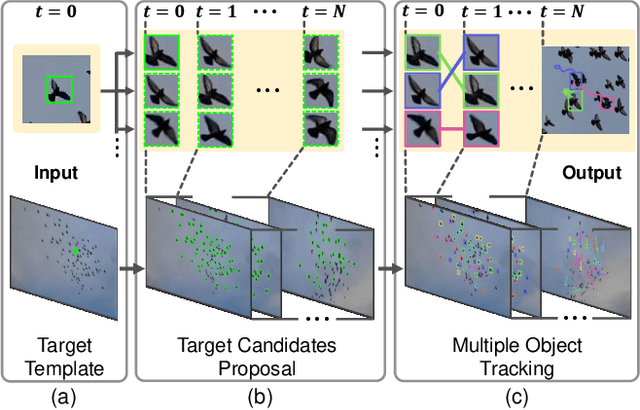
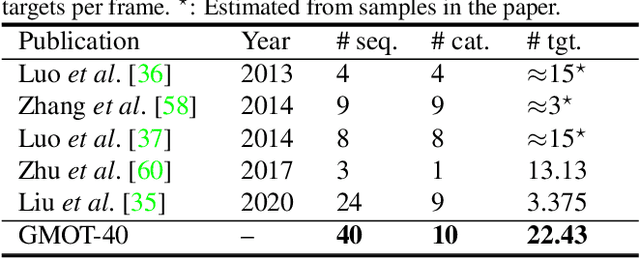
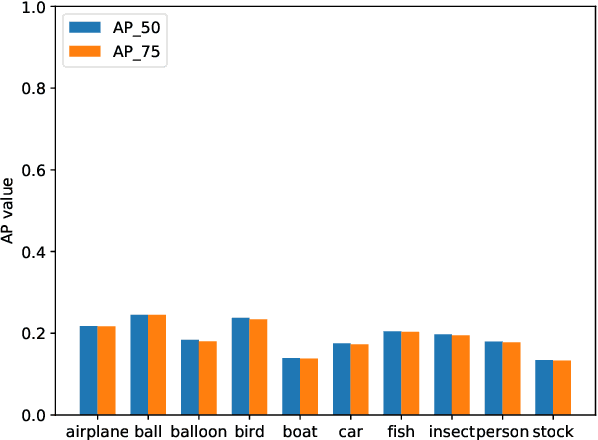
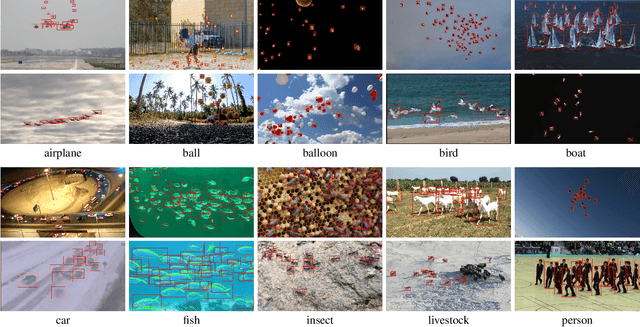
Abstract:Multiple Object Tracking (MOT) has witnessed remarkable advances in recent years. However, existing studies dominantly request prior knowledge of the tracking target, and hence may not generalize well to unseen categories. In contrast, Generic Multiple Object Tracking (GMOT), which requires little prior information about the target, is largely under-explored. In this paper, we make contributions to boost the study of GMOT in three aspects. First, we construct the first public GMOT dataset, dubbed GMOT-40, which contains 40 carefully annotated sequences evenly distributed among 10 object categories. In addition, two tracking protocols are adopted to evaluate different characteristics of tracking algorithms. Second, by noting the lack of devoted tracking algorithms, we have designed a series of baseline GMOT algorithms. Third, we perform a thorough evaluation on GMOT-40, involving popular MOT algorithms (with necessary modifications) and the proposed baselines. We will release the GMOT-40 benchmark, the evaluation results, as well as the baseline algorithm to the public upon the publication of the paper.
LaSOT: A High-quality Large-scale Single Object Tracking Benchmark
Sep 12, 2020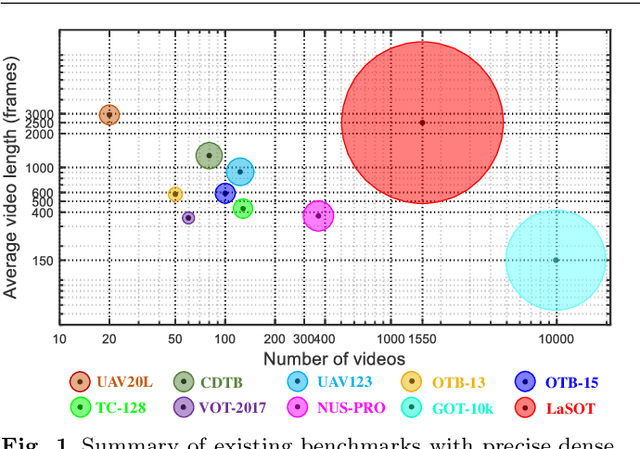
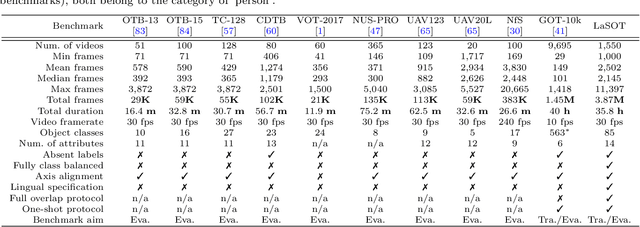
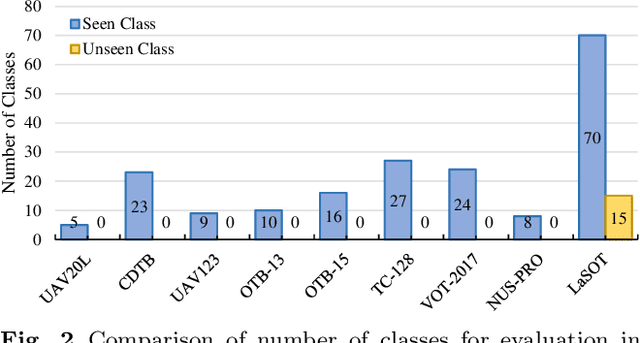
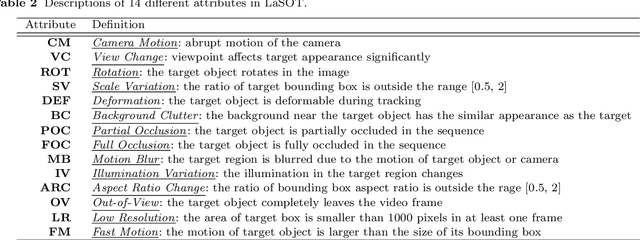
Abstract:Despite great recent advances in visual tracking, its further development, including both algorithm design and evaluation, is limited due to lack of dedicated large-scale benchmarks. To address this problem, we present LaSOT, a high-quality Large-scale Single Object Tracking benchmark. LaSOT contains a diverse selection of 85 object classes, and offers 1,550 totaling more than 3.87 million frames. Each video frame is carefully and manually annotated with a bounding box. This makes LaSOT, to our knowledge, the largest densely annotated tracking benchmark. Our goal in releasing LaSOT is to provide a dedicated high quality platform for both training and evaluation of trackers. The average video length of LaSOT is around 2,500 frames, where each video contains various challenge factors that exist in real world video footage,such as the targets disappearing and re-appearing. These longer video lengths allow for the assessment of long-term trackers. To take advantage of the close connection between visual appearance and natural language, we provide language specification for each video in LaSOT. We believe such additions will allow for future research to use linguistic features to improve tracking. Two protocols, full-overlap and one-shot, are designated for flexible assessment of trackers. We extensively evaluate 48 baseline trackers on LaSOT with in-depth analysis, and results reveal that there still exists significant room for improvement. The complete benchmark, tracking results as well as analysis are available at http://vision.cs.stonybrook.edu/~lasot/.
 Add to Chrome
Add to Chrome Add to Firefox
Add to Firefox Add to Edge
Add to Edge